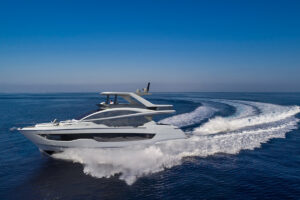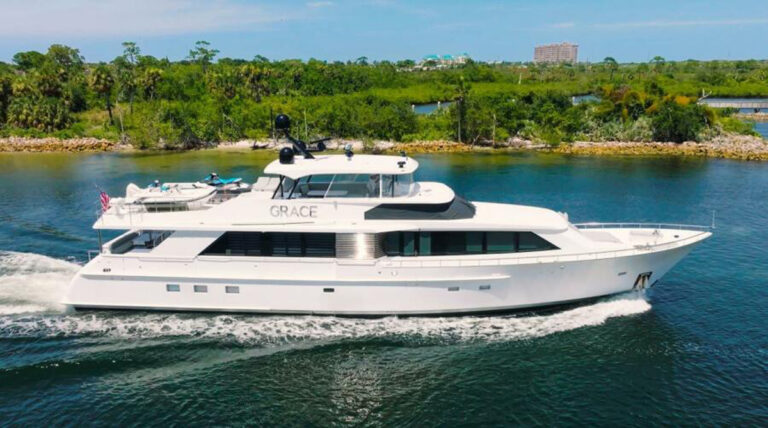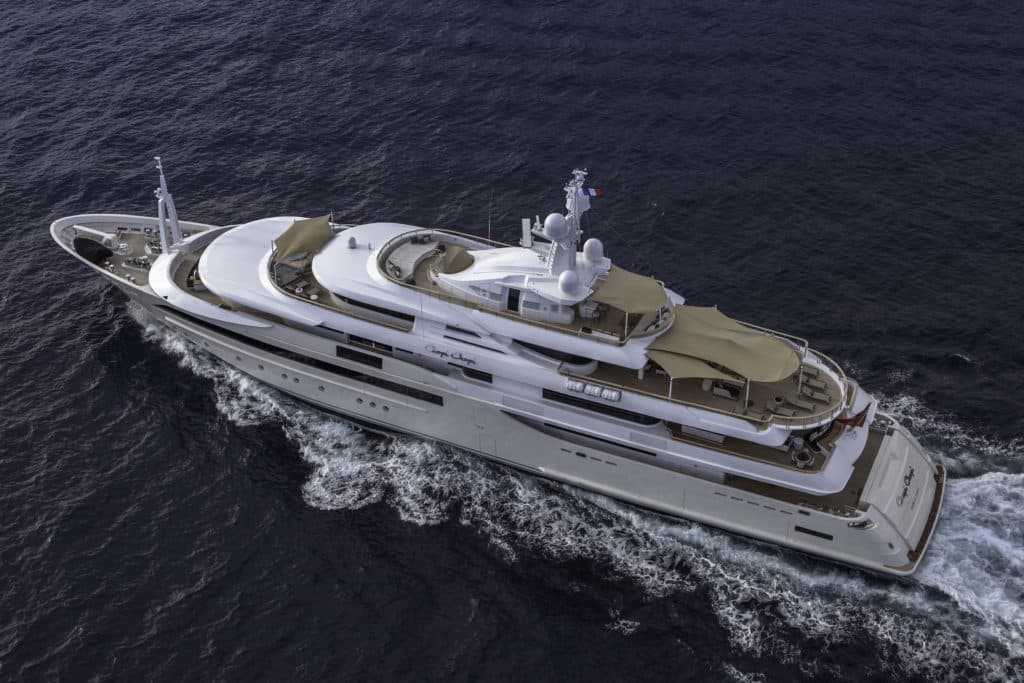
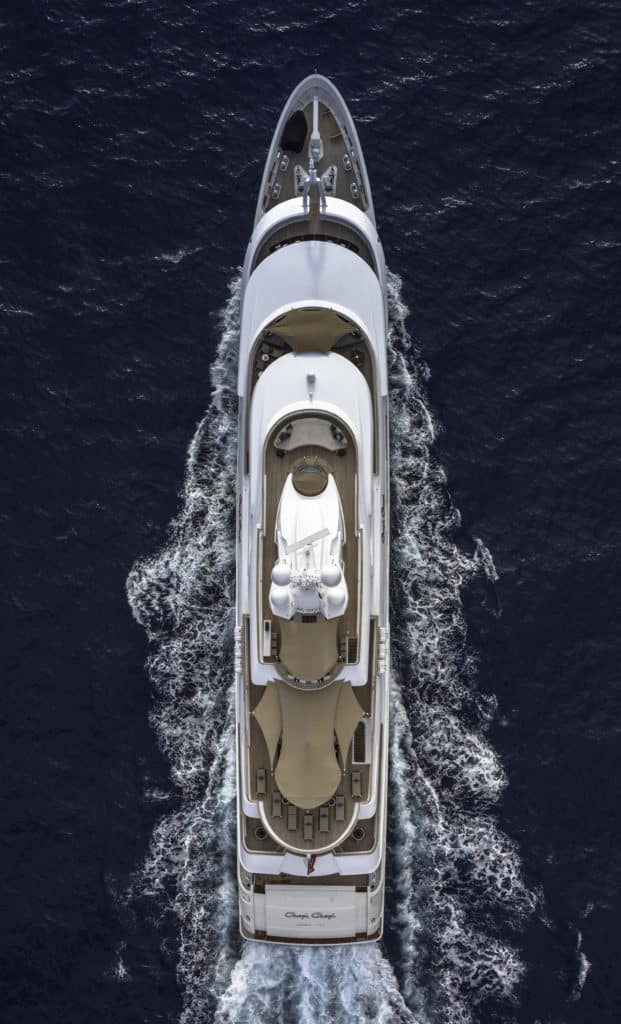
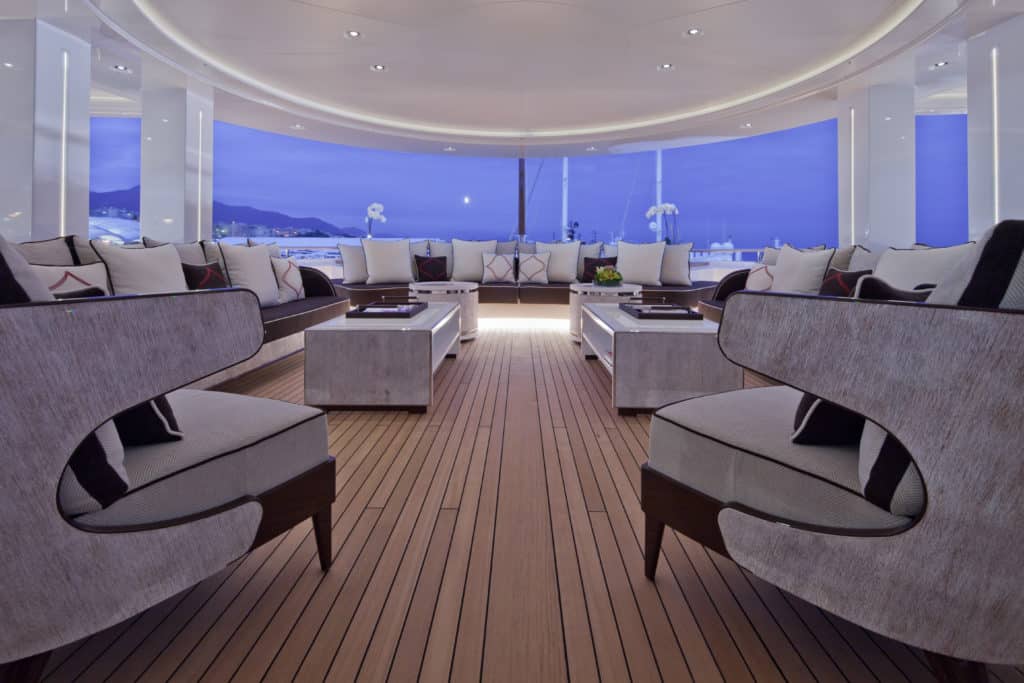
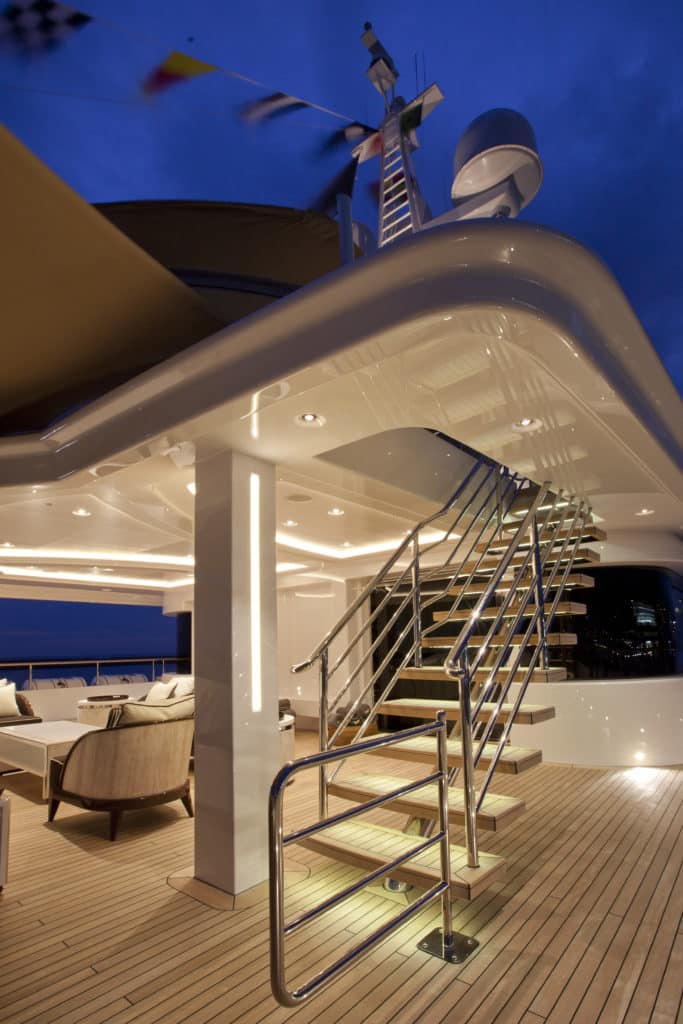
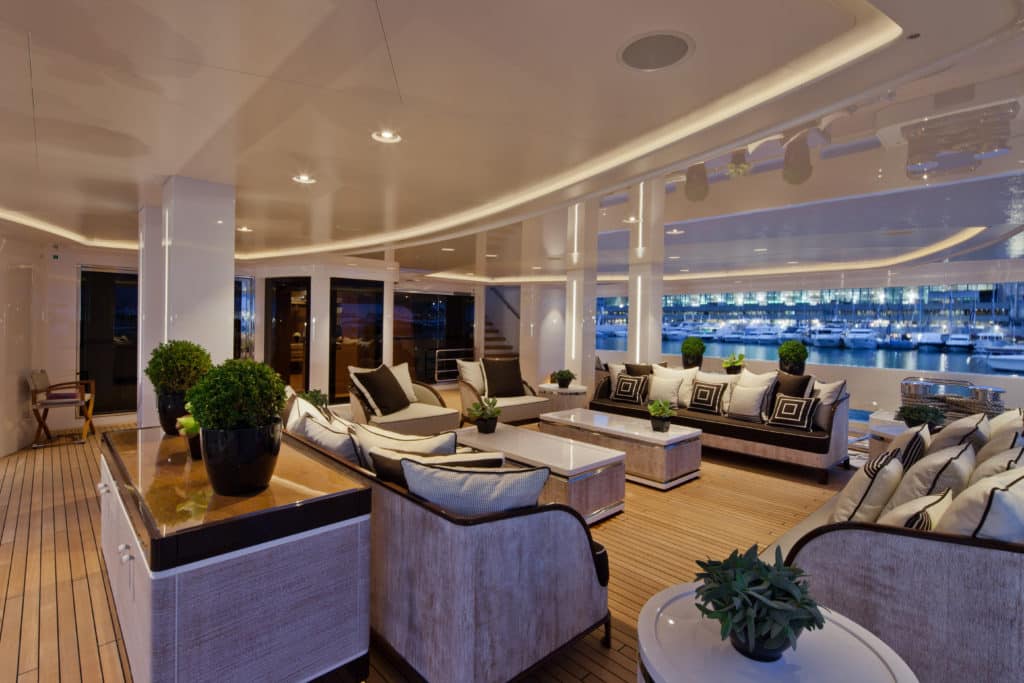
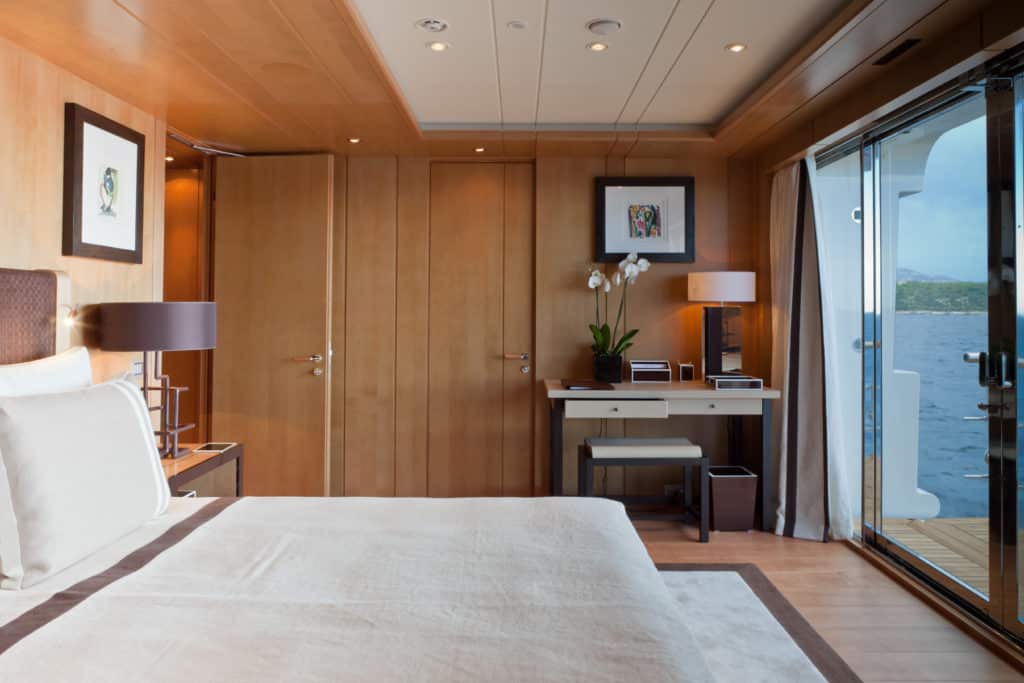
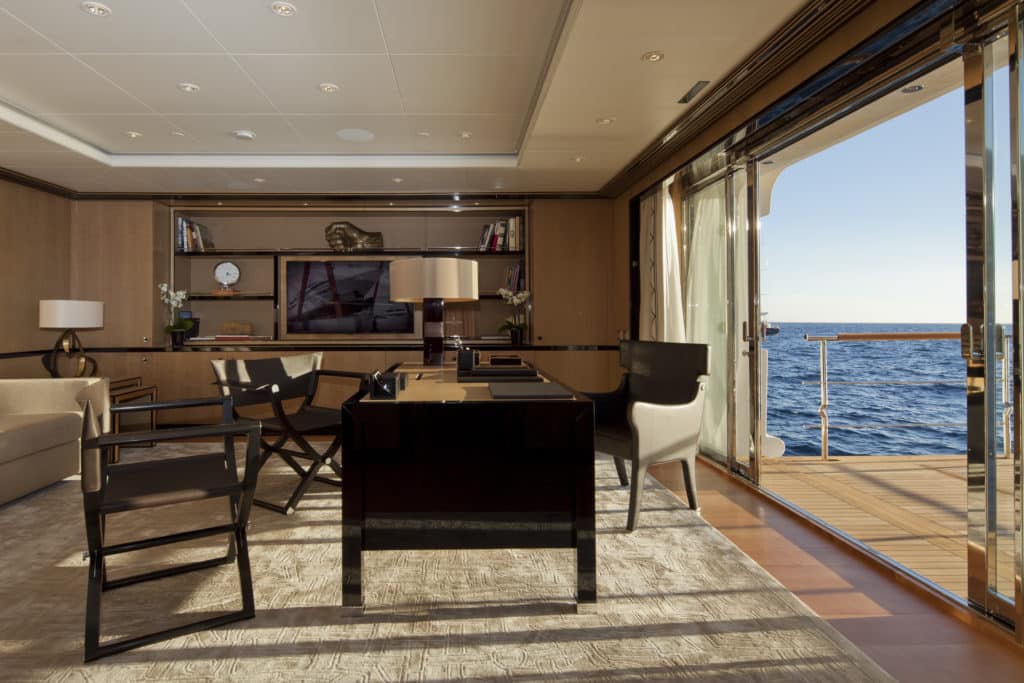
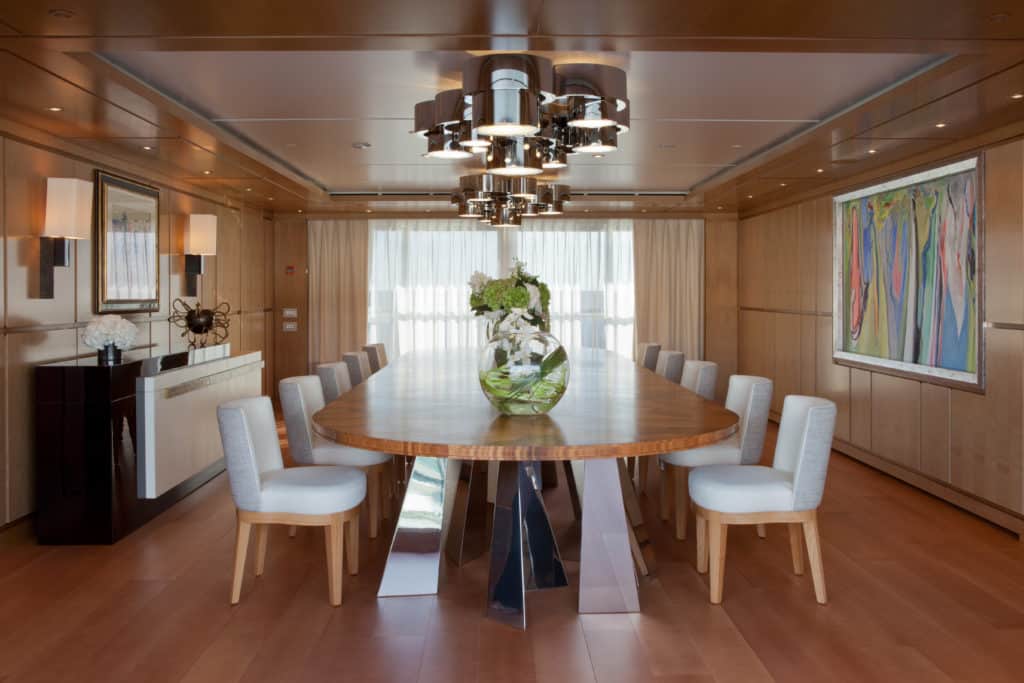
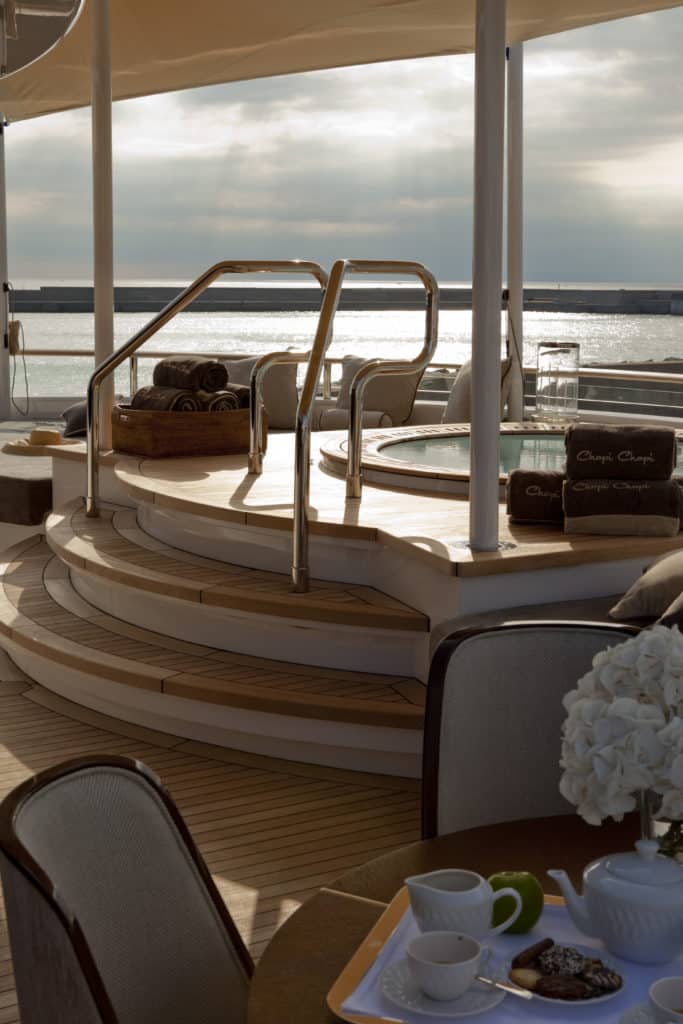
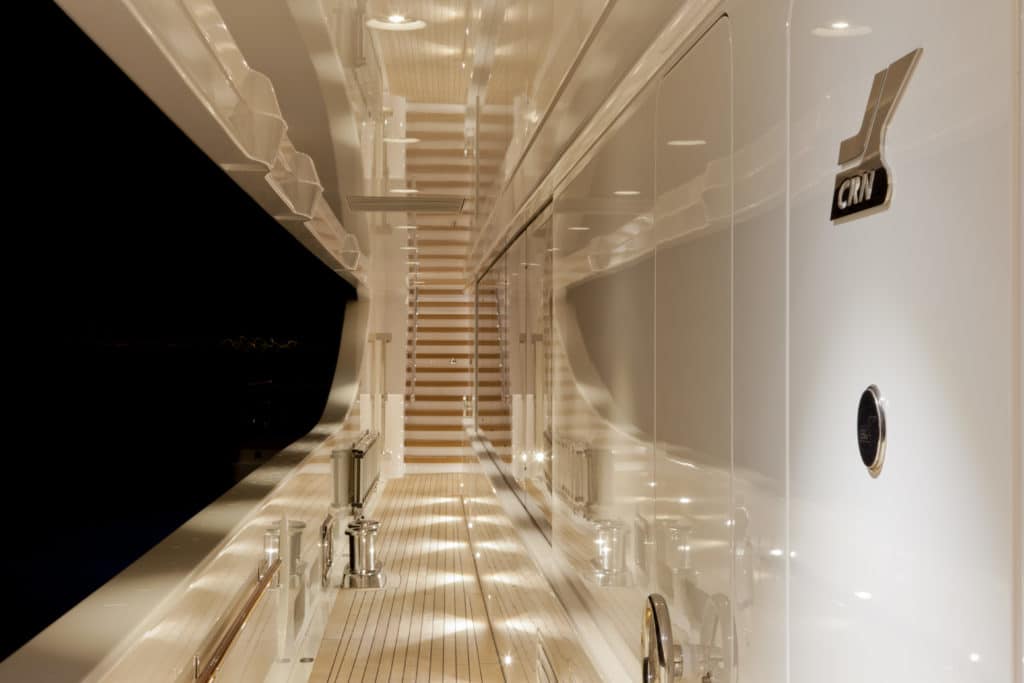
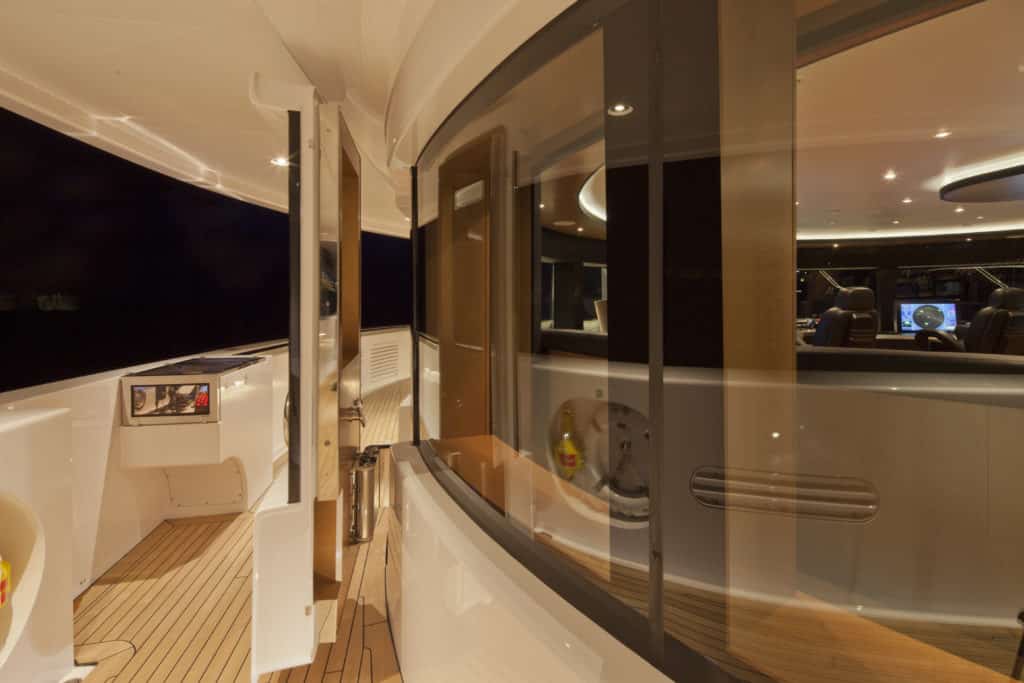
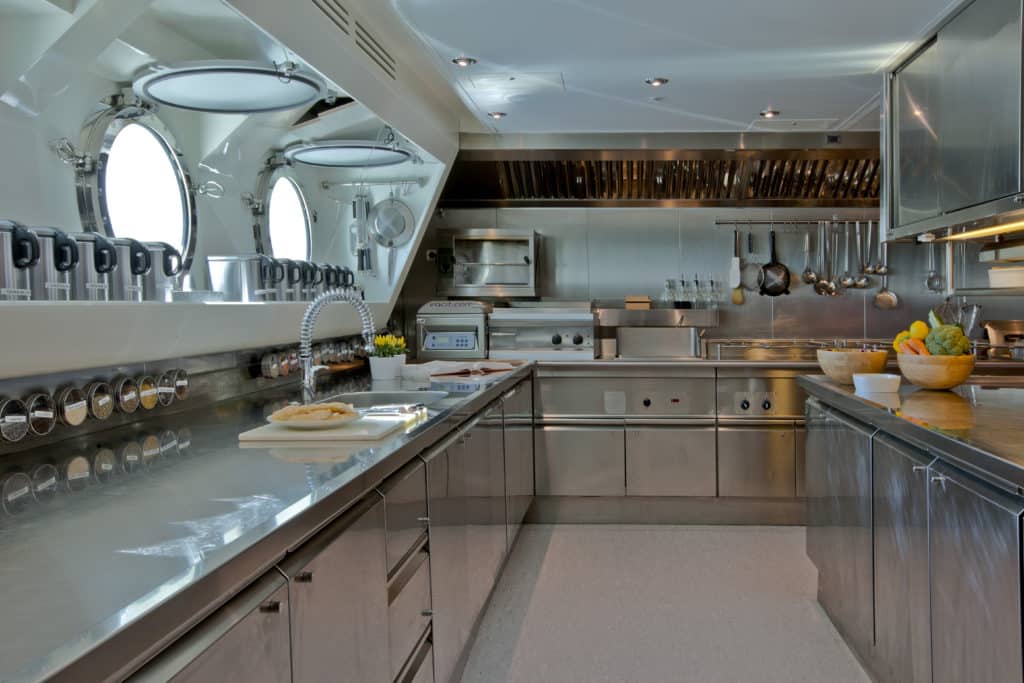
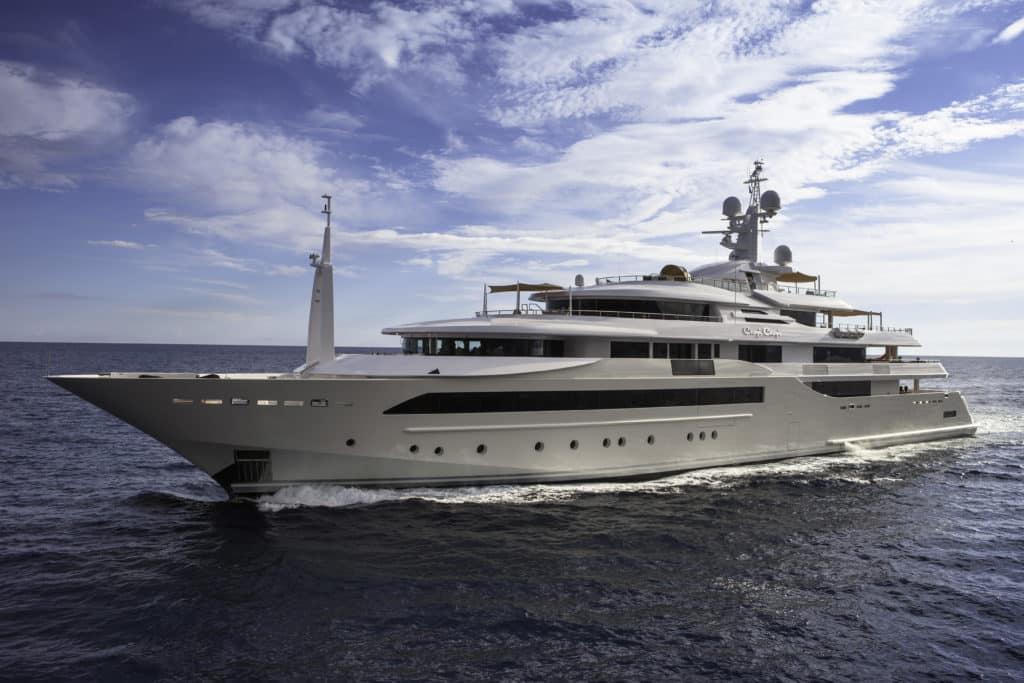
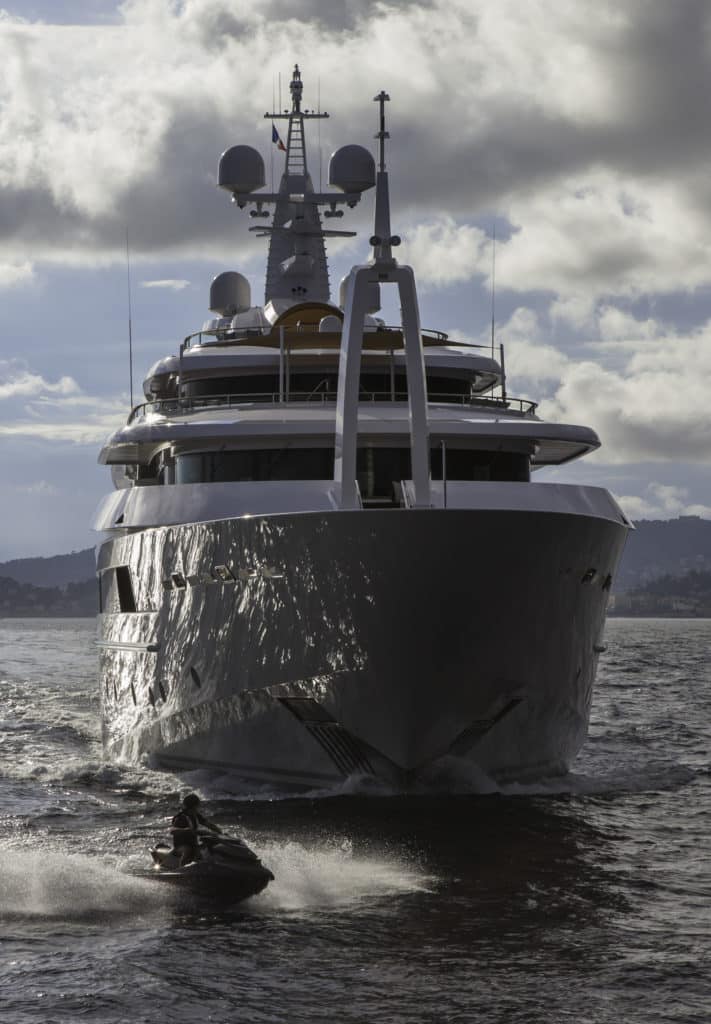
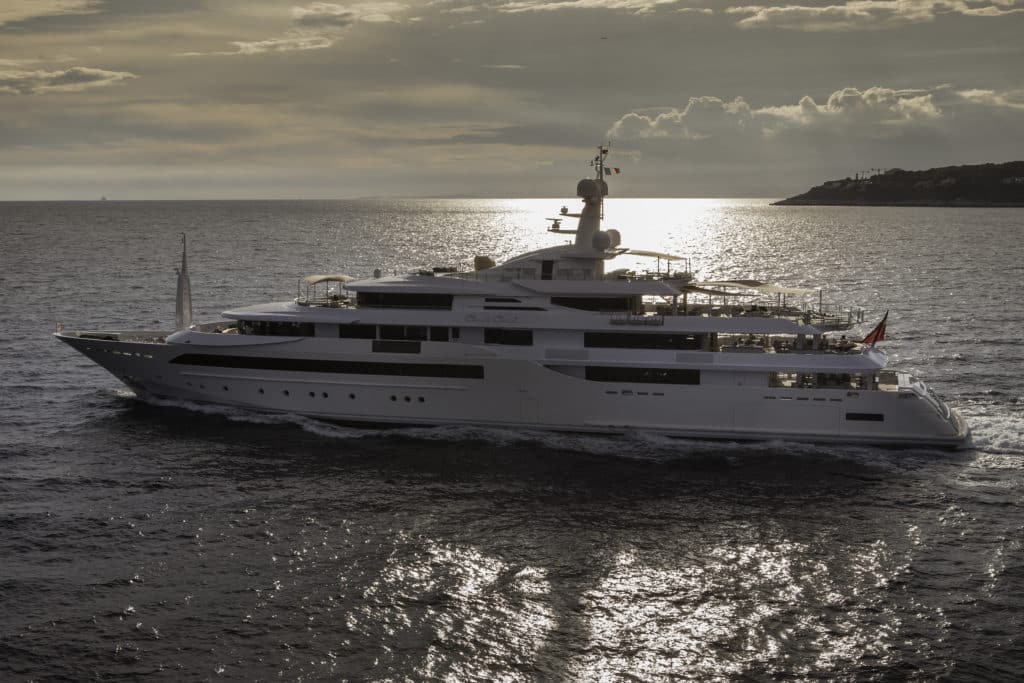
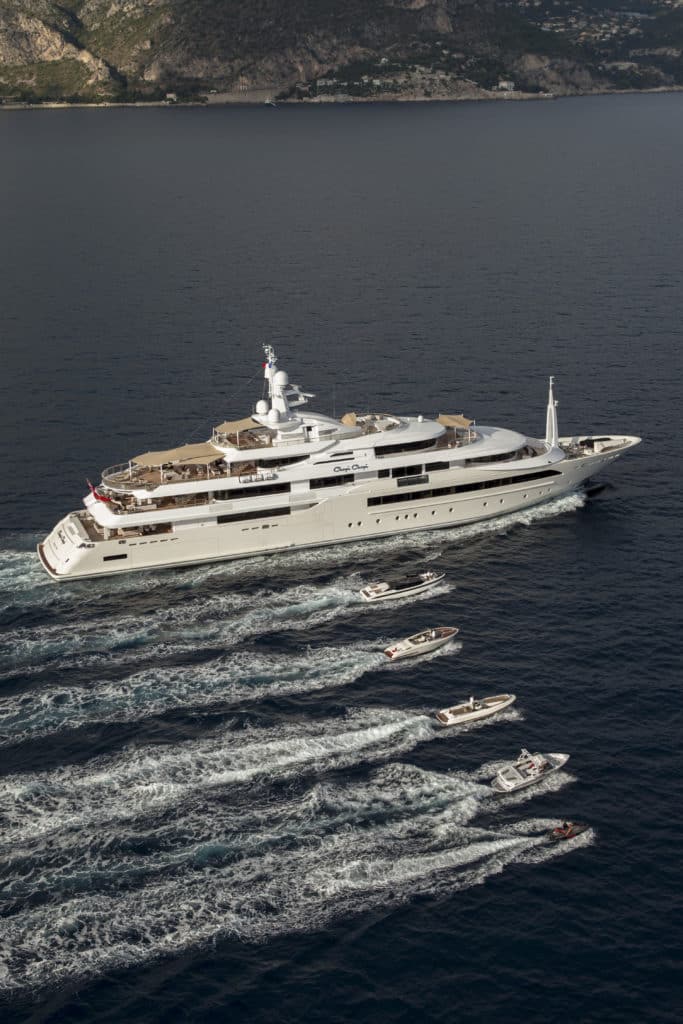
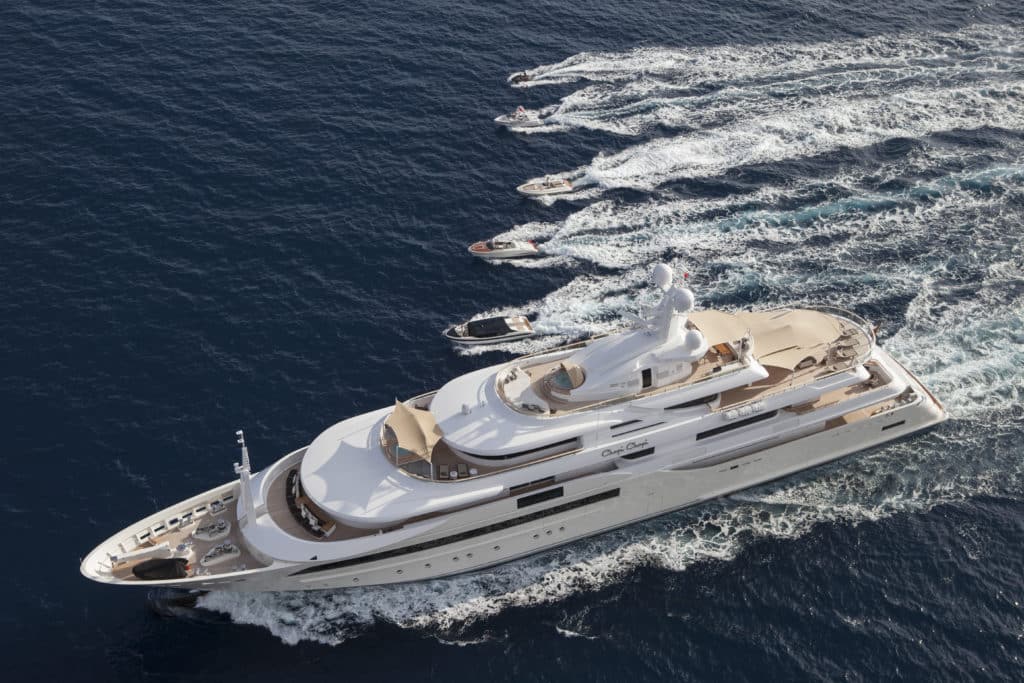
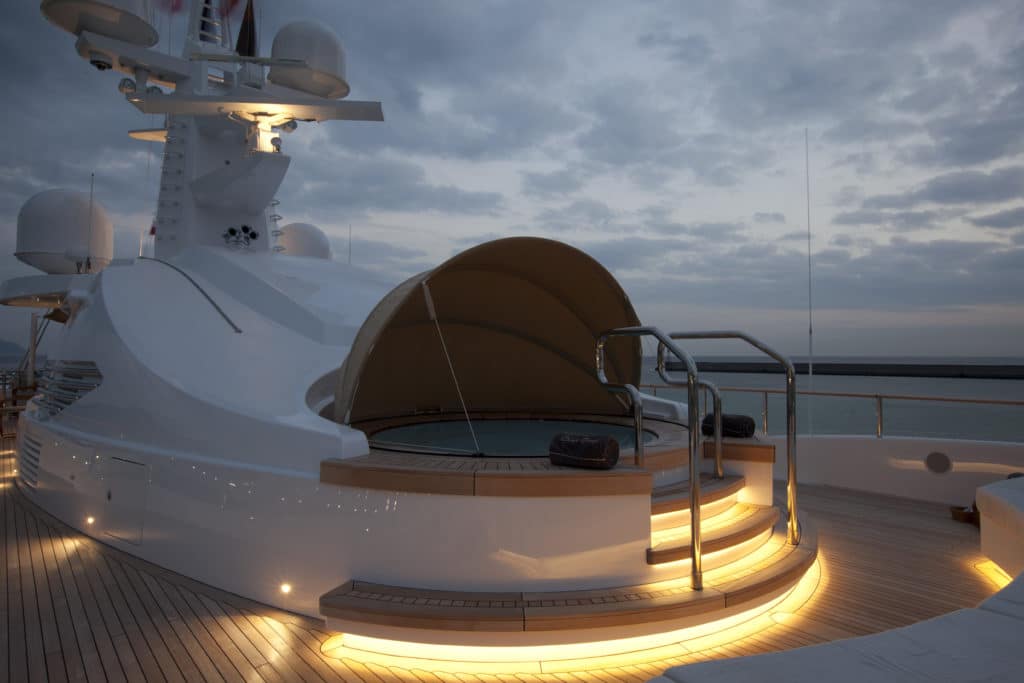
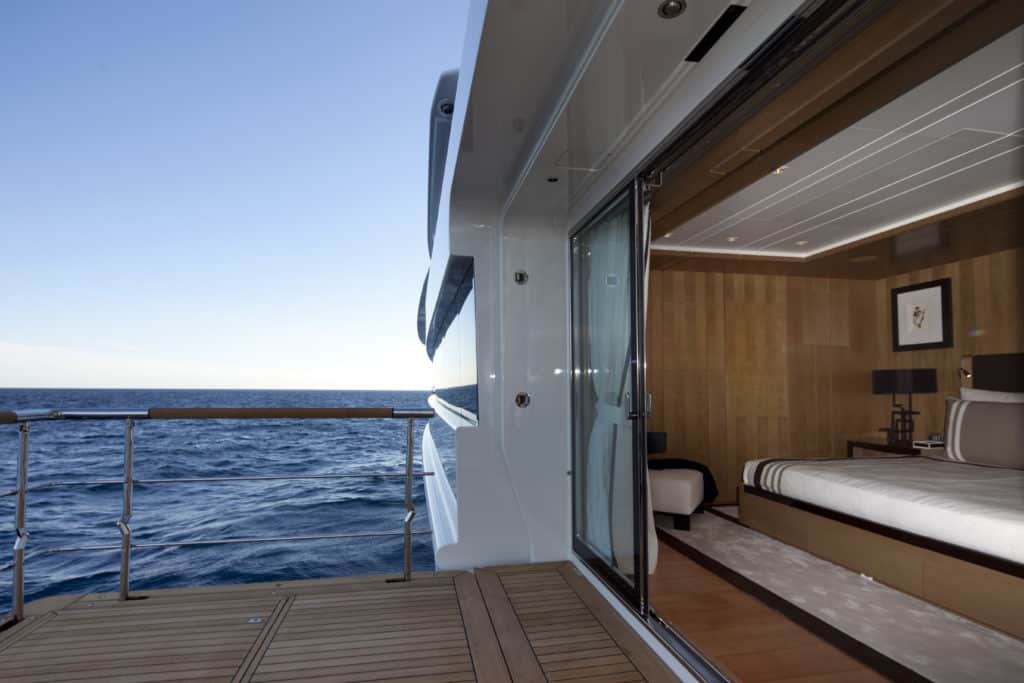
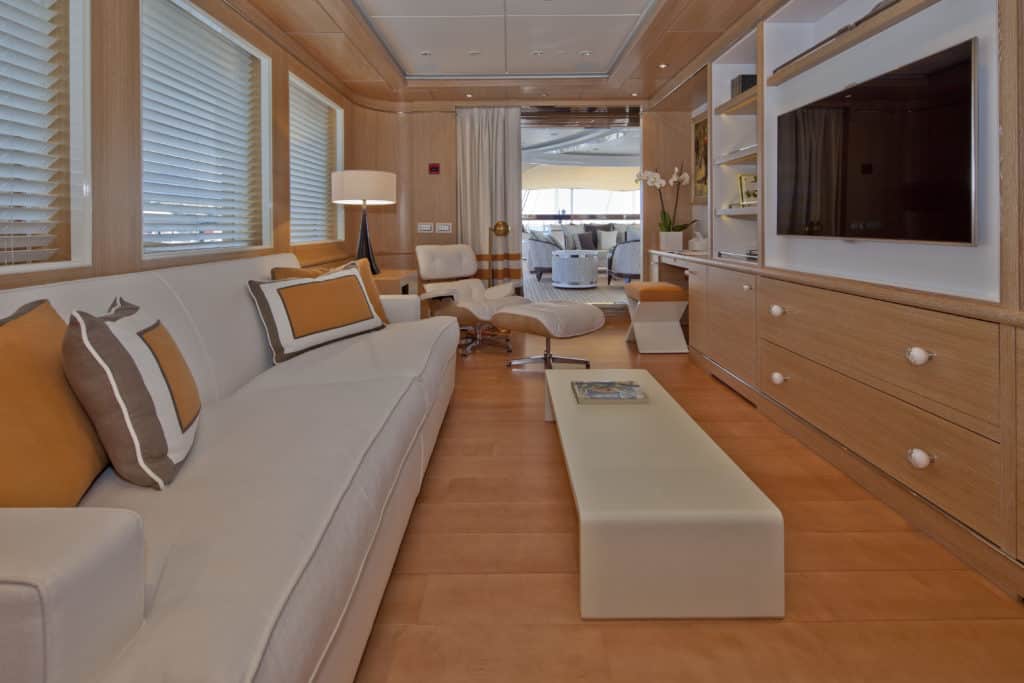
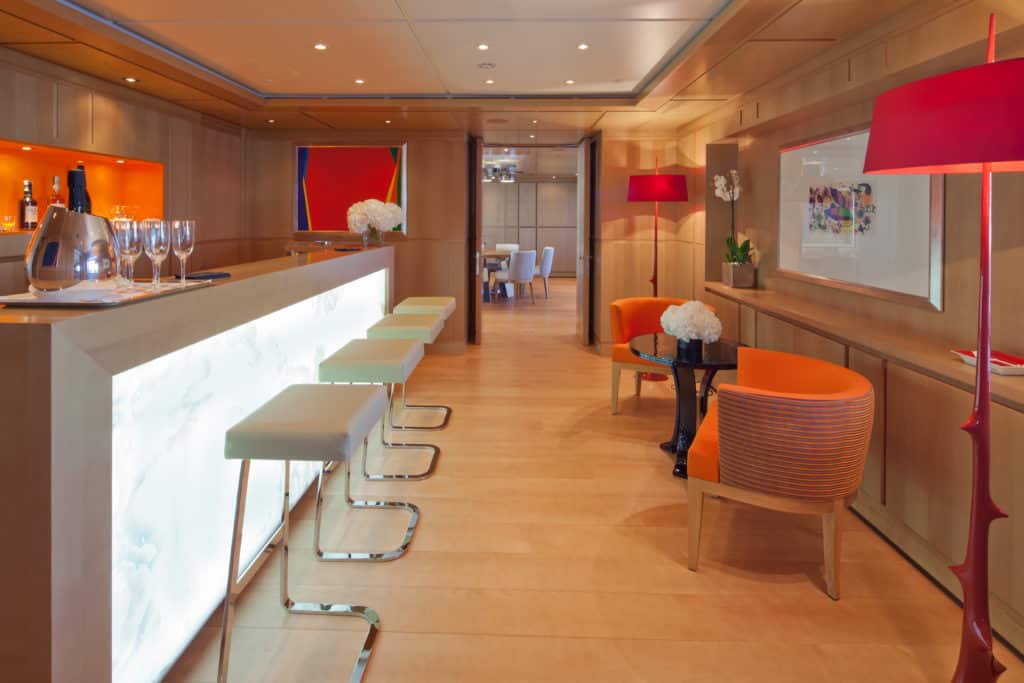
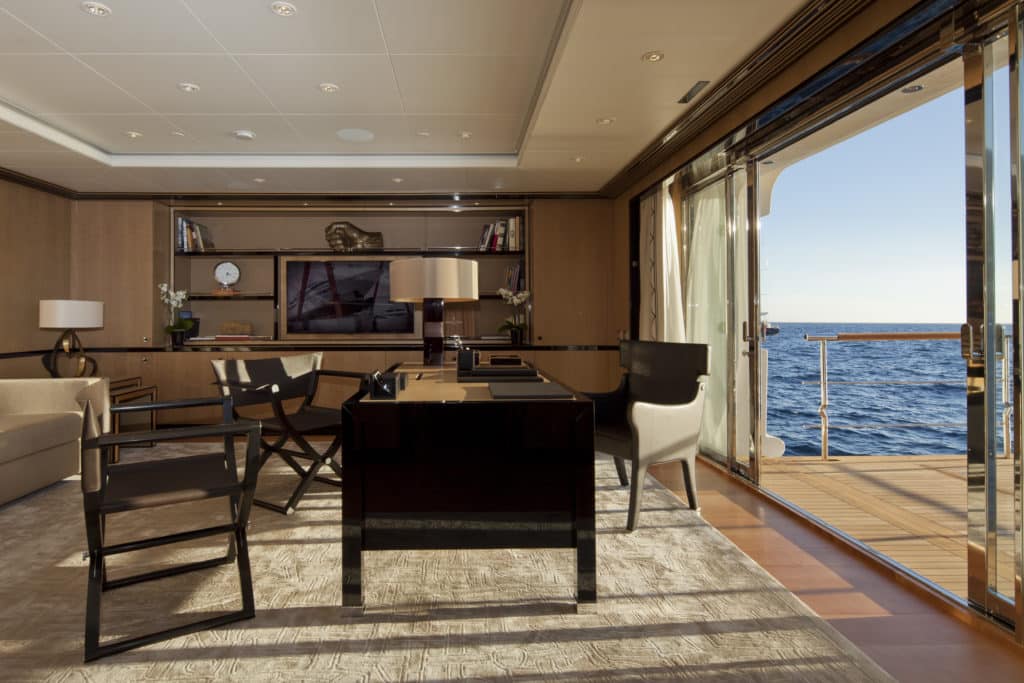
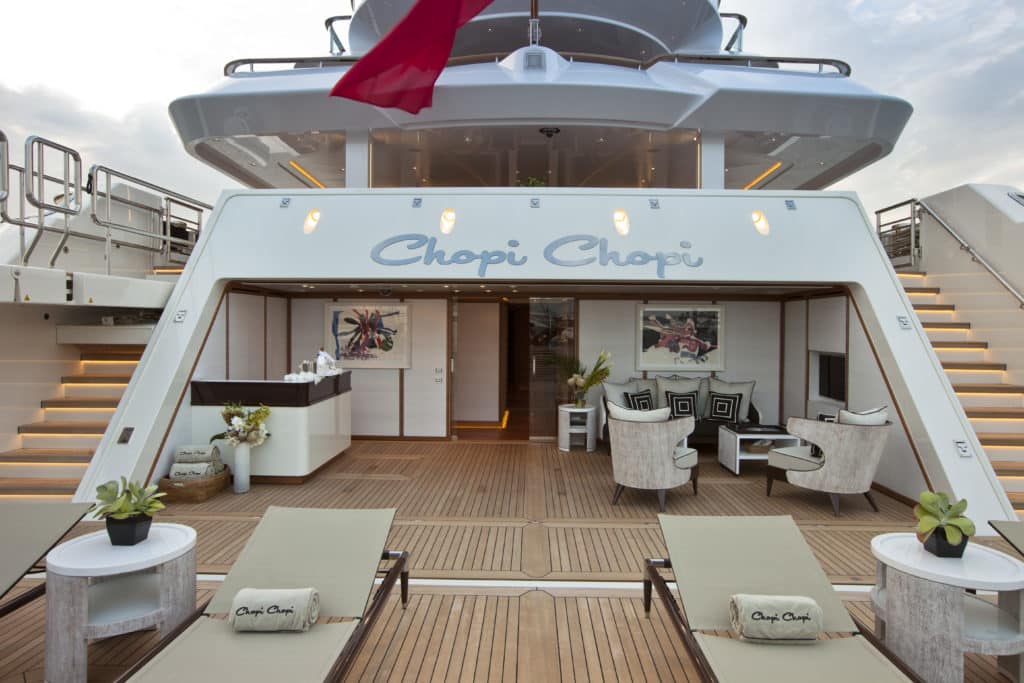
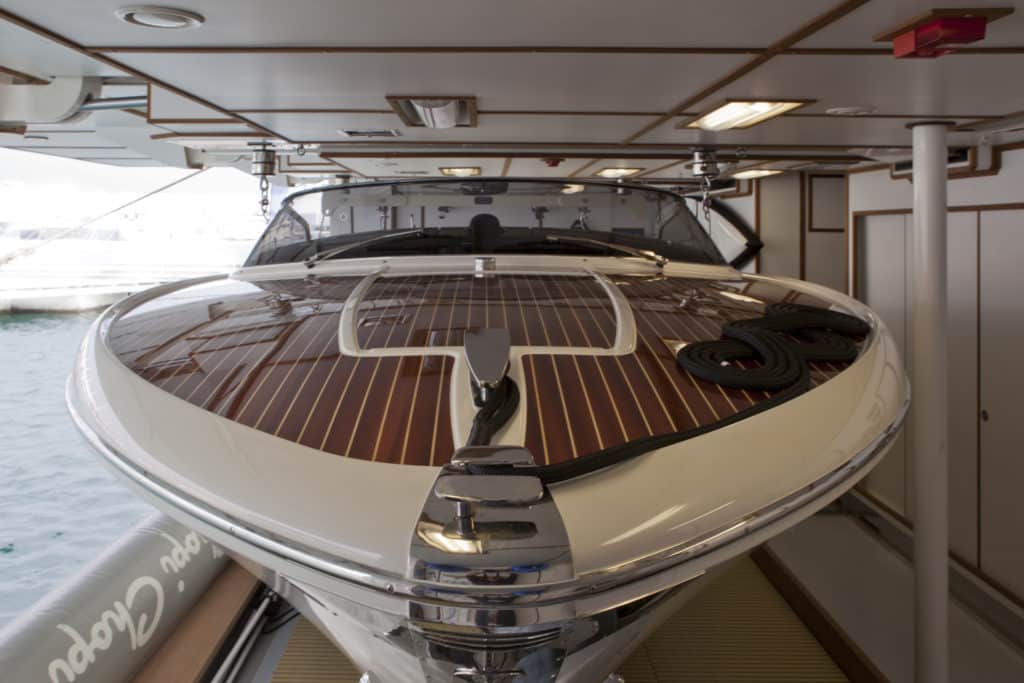
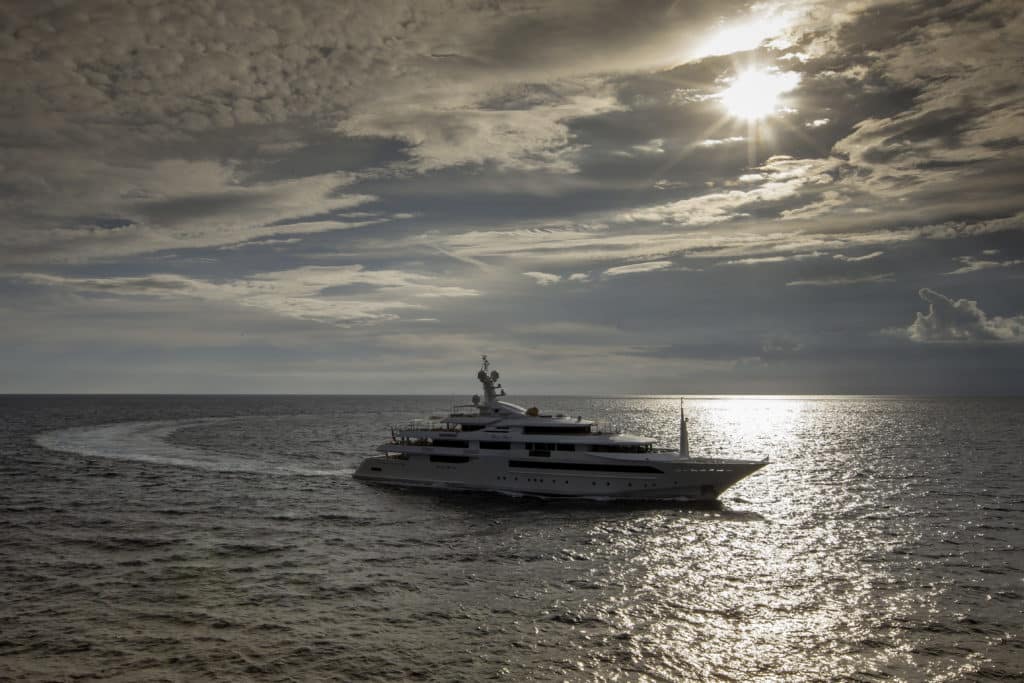
TWO ELEVATORS ARE ABOARD Chopi Chopi, one for crew, another for guests, but my host and I took the stairs. Builder [CRN][] , located in Ancona along Italy’s Adriatic coast, says the 262-foot motoryacht has five decks plus a subdeck, but believe me, it felt every bit of 20 stories by the time we’d completed the climb from the keel to the sun deck. I knew the yacht was big, of course, both from the plans and my view of her profile as we approached, but it’s not until you’re inside that you begin to get a feel for just how much volume is in such a vessel.
It’s my guess that the folks at CRN are impressed with the scale of their new flagship too, using phrases like “stunning volumes” and “wide spaced” to describe her. Those are a bit vague, so they go further in the technical specifications, listing some numbers that give a hint of the scope.
The main deck guest area, including five staterooms plus a communal sitting room with fold-out balcony, totals 11,500 square feet. A private owner’s deck sits between the upper deck and sun deck and is another 2,000 square feet, and that’s just inside. Her exterior deck areas on the guest and owner decks total 8,300 square feet, and the beach club at the stern is another 1,100.
Chopi Chopi carries 30 crew members in 4,500 square feet of accommodations and a lounge/mess area on the lower deck, plus another 550 square feet in the galley. Not included in those measurements are the inside and outside spaces that comprise the upper deck, where the bridge, salon and dining room are located, and the sun deck, with its spa, lounge and dining areas.
Building such a yacht takes a lot of materials and equipment, of course, and it takes a lot of people too. CRN estimates the total at 660,000 man-hours, or more than 150 people working full time for two years. Having been aboard such yachts during construction, I can testify that it is every bit the beehive of activity that such numbers would suggest, and the amount of planning, coordination and attention to detail that it takes to keep things moving with minimal conflict and disruption is immense.
A large part of the credit for that goes to Lamberto -Tacoli, who joined CRN’s parent Ferretti Group in 1996 at age 32 and has worked for CRN since 2001, rising to the position of president and CEO. That’s about the time I first visited the shipyard, which was just beginning a substantial modernization and expansion. The progress in both facilities and achievements under Tacoli’s leadership have been impressive, and Chopi Chopi is a clear illustration of that enhanced capability.
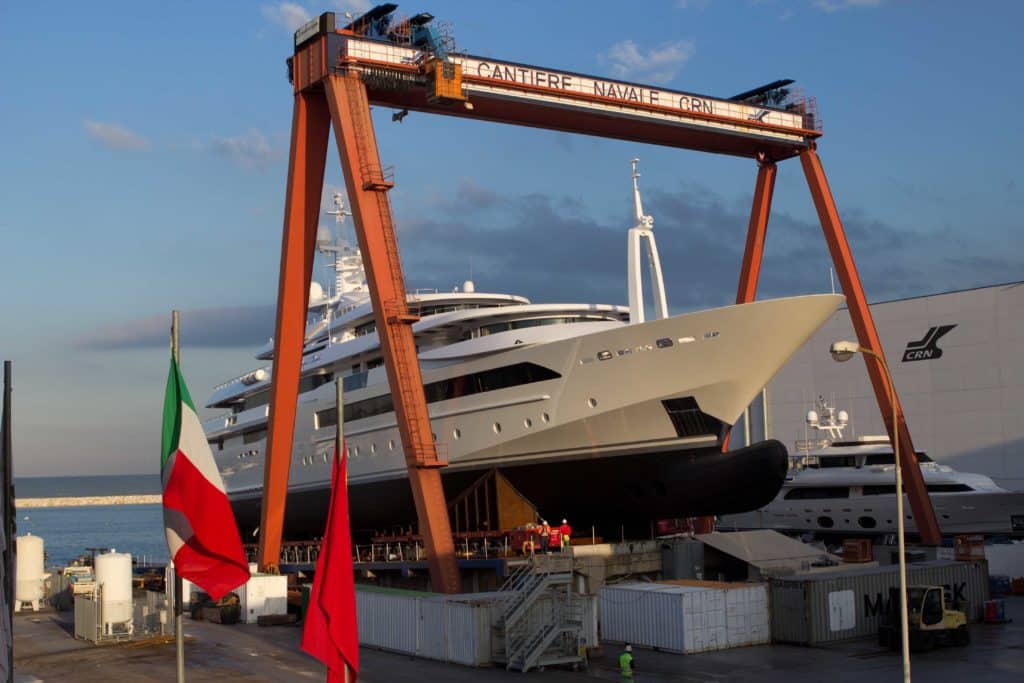
In many ways, designing the interior of a yacht such as Chopi Chopi is a considerable challenge. Not only is the yacht herself larger, but many of the individual spaces — guest staterooms, salon, dining room, sky lounge — are larger as well. The problem is that, while the individual spaces grow, individual humans do not. Guests don’t want to feel like they’re sitting in a hotel lobby rather than a salon, in a banquet hall rather than a dining room. The dimensions, proportions and furnishings of the spaces become critical in making them big enough to accommodate everyone and everything needed while maintaining a sense of coziness and intimacy.
Interior designer Laura Sessa addressed that challenge with flexibility throughout the public spaces to accommodate gatherings of two or three as well as events that call for the entire guest complement to be together. Guests seeking privacy or solitude don’t have to look far to find it. One of the guest staterooms has a fold-out balcony, while another, the full-beam VIP forward, has a fixed balcony cut into the hull. The owners have a deck to themselves, including a full wraparound open deck forward of the stateroom that includes a spa, dining area and sun lounge, all overlooking the bow and horizon. Guests in the other four staterooms each have access to their own sitting room with balcony, as well as to multiple open decks topside on three decks. If that’s not enough, there’s the beach club aft. Guests also don’t have to worry about being in the crew’s way. Crew and service spaces are totally separated from guest areas, with their own stairways and elevator. While the guest spaces extend to the full beam in some areas, strategically placed side decks and exterior ladders allow for mooring and anchoring without crew needing to transit through guest areas.
On some yachts, elevators and central stair-cases stop short of full service, quite literally, by not extending all the way from the lower deck to the sun deck. That’s not the case aboard Chopi Chopi. A watertight door is cut through the starboard side of the hull at the lower deck level, allowing easy boarding when the yacht is moored alongside a low dock. The elevator and winding staircase begin at the foyer just steps from the door and extend uninterrupted to the sun deck, where they terminate inside an enclosure built into the base of the mast, a small area that also includes a day-head. Also at this top level are a whirlpool spa and sun lounge forward, and a bar and dining area aft.
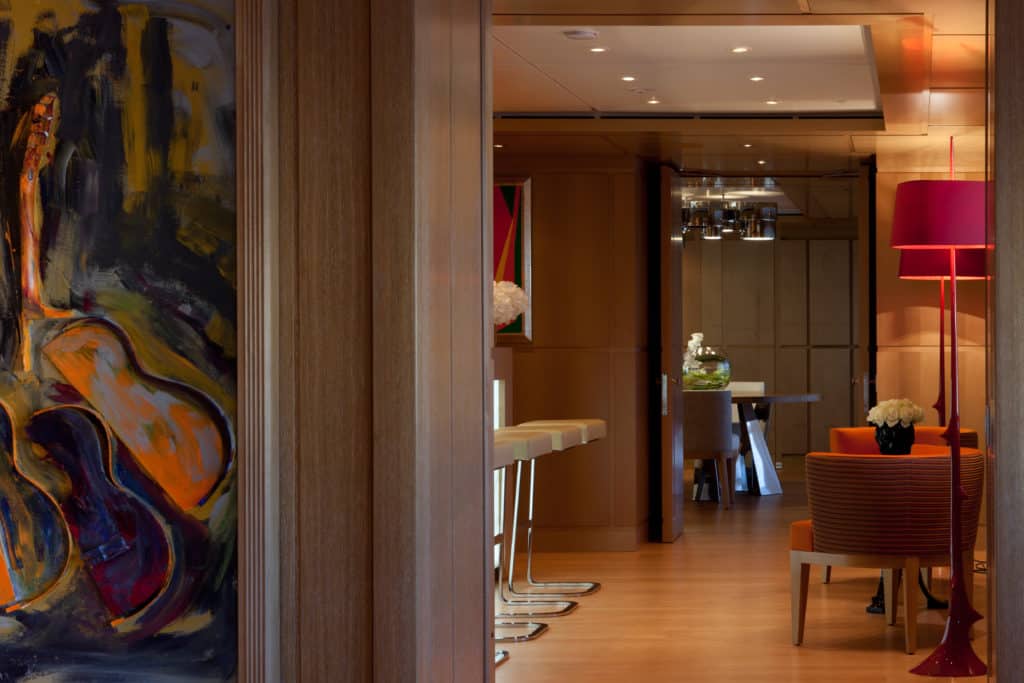
Next down is the owner’s deck, where a king berth sits at the center of a semicircular space forward. There are the expected oversize hanging lockers and head with tub, shower and sauna, and the deck also includes a crew cabin for private staff as well as a service pantry. Aft, the open deck can be maintained private or opened to other guests, and with the awnings down, it doubles as a helipad.
The upper deck starts with a navigation bridge that lacks only a few degrees of being perfectly circular, echoing the shape of the owner’s deck above. Spacious guest settees are on the Portuguese bridge forward of the vertical bridge windows with a central ladder for those who want to do the Leonardo di Caprio thing at the bow. Abaft the captain’s cabin are the dining room, a small sitting area and bar for aperitifs, a foyer, a sky lounge and a large open aft deck outfitted for both alfresco dining and conversation.
The main deck carries six guest staterooms and a sitting room forward. Amidships is the main salon, with two large furniture groupings and one smaller area for two. Aft is a spacious open deck that affords not only seating, but also access to the beach club and swim platform via starboard stairway and to the quay via passerelle to port. Forward of the beach club is a tender garage with side doors and overhead cranes for the 31-foot Dariel Limo tender and the 28-foot Riva Iseo. Another tender, a 23-foot Dariel RIB, and a rescue boat are stowed forward with their own centerline crane.
As is now obvious, Chopi Chopi is a huge step up and forward for CRN, one it has taken not only without stumbling, but with considerable élan as well. The builder is not resting on its laurels, though, as it continues with an impressive order book not only for its number but also for its breadth and diversity, cementing the yard’s place among the world’s top builders of custom super-yachts. Next up is a 243-footer by Zuccon International Project, followed by a 240-footer by Frank Laupman’s Omega Architects, a 197–footer by Francesco Paszkowski and a 180-footer by Carlo Nuvolari and Dan Lenard, an astounding array of motoryachts by any measure.
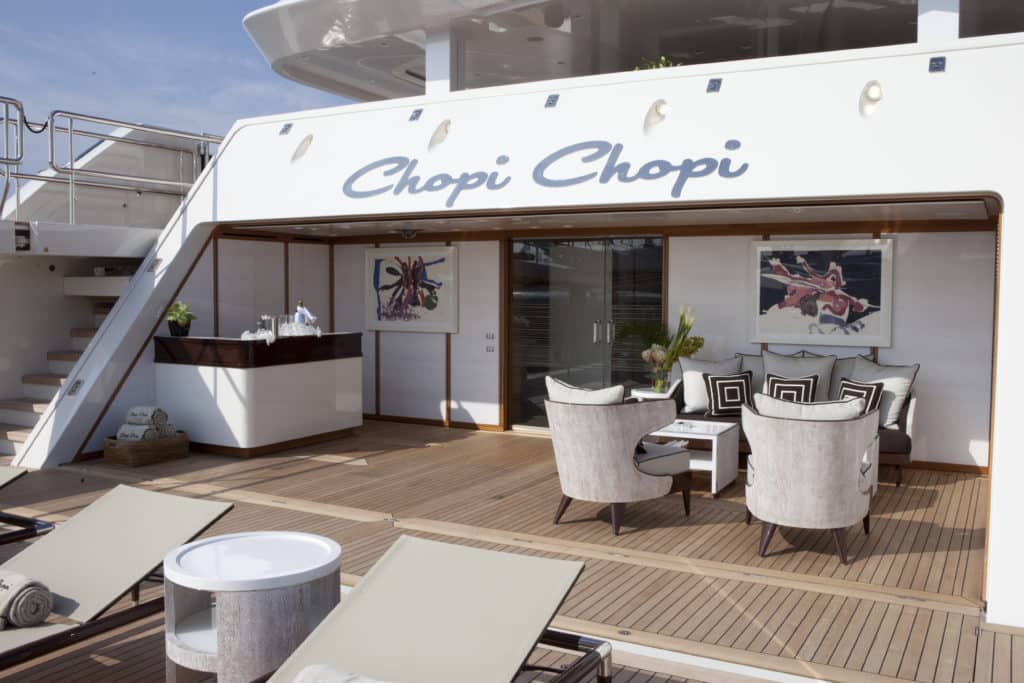
The First 50 Years
He named the enterprise Costruzioni e Riparazioni Navali (Naval Construction and Repair), and within a few years, CRN was building yachts up to 70 feet in length. Those caught the attention of Carlo Riva, who commissioned the yard to build his larger Riva yachts, which to that point had been built in Holland. Six Marco Polo and two Vespucci models were constructed over eight years, the last being Riva’s personal yacht. By 1978, CRN had built its first yacht over 150 feet, Fath Al Khair, and business continued to grow along with the size of the yachts. Prominent among them were the F100, designed by Gerhard Gilgenast for Gianni Agnelli in 1983; Azzurra, delivered in 1988; and Numptia, an award-winner launched about the time the Ferretti Group acquired CRN in 1999. Soon thereafter, CRN bought the adjoining Morini shipyard and undertook a significant expansion and modernization of both facilities, better enabling them to compete in the superyacht arena. Dozens of significant yachts by a variety of talented designers have been delivered by CRN in recent years, including Magnifica, XS of London, Ability, Emerald Star, Eviva, Darlings Danama, J’Ade and its new flagship, Chopi Chopi, to name only a few. What’ll the next 50 years bring?




